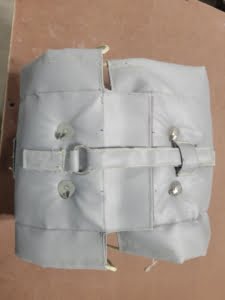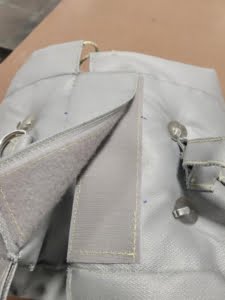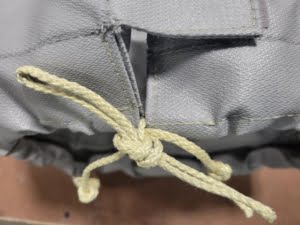Removable insulation blankets (also known as removable insulation covers) should be a very easy and intuitive product to work with. If made correctly, it should fit quite literally like a tailored suit. At Fit Tight Covers, we ensure the fit of our removable insulation covers through an important step: field-measuring. This integral process allows our designers and fabricators to understand every detail of the application for our thermal insulation. It also allows us to manufacture our removable insulation covers in the actual shape of the piping or mechanical equipment that our customer is insulating.
Once you have a removable insulation jacket that fits and is custom-made to your application, installation is very easy. First, you want to make sure the mechanical piping system or piece of mechanical equipment is off and non-operational. This helps protect the installer from being burned or injured, which is of the utmost importance. It also provides a work environment free of distractions.

D rings with straps
Next, you want to detach any of the components on the removable insulation pad that fasten it together in transit from the factory. In all of Fit Tight Covers’ specifications, we have a “belt and suspenders” approach to the securement aspects of our removable insulation blankets. This means we make our removable insulation covers with D-rings, Nomex Velcro, AND lace hooks, so you can feel confident the removable insulation blanket will never detach from the mechanical equipment you’re insulating. To reiterate, detach the securements so the removable insulation cover can open up, like a clam shell.

Nomex velcro
Next, look at the piece of mechanical piping or equipment that you are insulating with the removable insulation cover in hand. Because so many applications are unique, you will be able to tell which way the removable insulation should be installed. Usually, it is one of two ways and you’ll know immediately if you have it wrong because there will be an obstacle blocking an easy slide-on feel. Once the removable cover is mounted on the item you are insulating, attach with the Velcro first, the D-rings and straps next, and finally stainless steel wire and lace hooks if you need an extra secure or snug fit (usually this is only on large items, like an engine exhaust system).
As a final step, our removable insulation covers need to be conjoined with the conventional insulation on either side of the mechanical component being insulated with the cover. Normally, the customer and Fit Tight Covers agree upon a “bolt length” or distance to extend the flap of the removable insulation cover. This part of the cover should fit over the conventional insulation, like a sleeve. Once that step is complete, tie down the flap with the pre-installed sinch tie to provide a snug, closed insulation system.

Tie downs for jacket flaps
When working with Fit Tight Covers, your removable insulation covers will be delivered in an organized fashion. This means they come in order, with boxes labeled and only 4-5 items per box. There are also tags on each removable insulation blanket that state a description and location from when our team took the field measurements on-site. This helps streamline your installation, so you are not guessing where to install the thermal insulation. Time is money! At hospitals for example, there are tons of mechanical rooms and different steam systems on every level. If you are installing 150 removable insulation covers and 10 go on each floor, you’ll want to know on the outside of the box, where to stage those items. With Fit Tight Covers, this will be easily achievable, intuitive, and easy to complete your insulation project.
Voila, you are done! Your removable insulation cover will be in service for years to come. It will also provide your operators or maintenance personnel access for testing, calibration, or routine preventative maintenance. It will also help your company significantly reduce energy costs, therefore reducing the ambient temperature in the plant and providing a safe, quiet work environment.
Thermal insulation has a massive return on investment (ROI) when you have operating temperatures that tend to be higher on the scale: 200F to 2000F. The components and equipment typically insulated by removable insulation covers often get forgotten about or left uninsulated (think valves, flanges, meters, strainers, manways, vessels). This is because they seem “small” compared to the rest of the system insulated by conventional insulation. However, these hundreds of items in your plant add up to a create a major difference in your energy costs. When working with a partner, like Fit Tight Covers, your installation will be a breeze. But more importantly, it will affect your bottom line via reduced energy costs and provide you with a simple payback and return on investment that your purchasing department will love. Please reach out to us directly if you have any questions about the installation of your removable insulation blankets and how we can track the savings provided by our custom insulation systems.






